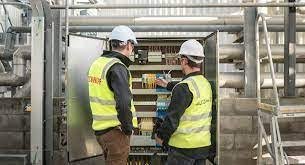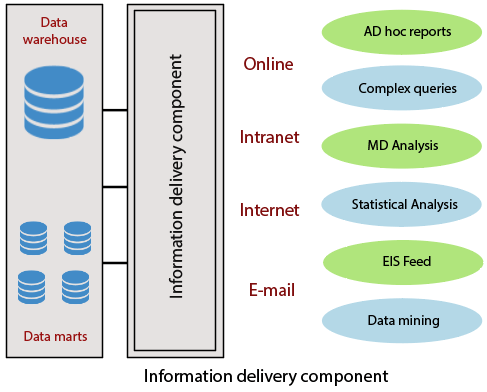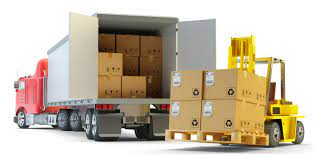Tank Farm Manager (1 years diploma)
Tank Farm Manager click here
Brief Job Description: The individual manages one or more tank farms, monitors
overall operations and coordinates with customs, ports, clients, shippers,
government agencies, regulatory authorities, etc. S/he is also responsible for
safety and security of the cargo and infrastructure of the tank farm.

Qualifications Pack for Tank Farm Manager
Options
Option 1: Port Terminals Management
The unit is about managing and operating port cargo terminals, their compliances
and businesses
Personal Attributes:
The job holder should be medically and physically fit to operate in liquid terminals.
S/he should be analytical, observant and diligent in monitoring operations,
assessing trends, drawing inferences and developing future-plans. S/he should have
analytical, organisational and leadership traits to prepare forecasts, budgets,
schedules, growth plans, new projects and implement them.
Description
Core Skills/Generic
Skills
Core Skills or Generic Skills are a group of skills that are key to learning and
working in today’s world. These skills are typically needed in any work
environment. In the context of the NOS, these include communication related
skills that are applicable to most job roles.
Function
Function is an activity necessary for achieving the key purpose of the sector,
occupation, or area of work, which can be carried out by a person or a group
of persons. Functions are identified through functional analysis and form the
basis of NOS.
Job role Job role defines a unique set of functions that together form a unique
employment opportunity in an organization.
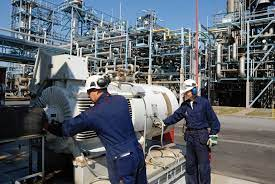
Knowledge and Understanding
Knowledge and Understanding are statements which together specify the
technical, generic, professional and organizational specific knowledge that an
individual needs in order to perform to the required standard.
National Occupational
Standards (NOS) NOS are Occupational Standards which apply uniquely in the Indian context
Electives
Electives are NOS/set of NOS that are identified by the sector as contributive
to specialization in a job role. There may be multiple electives within a
Qualifications Pack (QP) for each specialized job role. Trainees must select
atleast one elective for the successful completion of a QP with Electives
Options
Options are NOS/set of NOS that are identified by the sector as additional
skills. there may be multiple options within a QP. It is not mandatory to select
any of the options to complete a QP with Options.
Unit Code Unit code is a unique identifier for an Occupational Standard, which is
denoted by an ‘N’
Unit Title Unit title gives a clear overall statement about what the incumbent should be
able to do.
Occupation Occupation is a set of job roles, which perform similar/related set of functions
in an industry.
Organizational Context
Organizational Context includes the way the organization is structured and
how it operates, including the extent of operative knowledge managers have
of their relevant areas of responsibility.
Performance Criteria Performance Criteria are statements that together specify the standard of
performance required when carrying out a task.
Qualifications
Pack(QP)
Qualifications Pack comprises the set of NOS, together with the educational,
training and other criteria required to perform a job role. A Qualifications
Pack is assigned a unique qualification pack code.
Qualifications Pack
Code
Qualifications Pack Code is a unique reference code that identifies a
qualifications pack.
Scope Scope is the set of statements specifying the range of variables that an
Qualifications Pack for Tank Farm Manager
individual may have to deal with in carrying out the function which have a
critical impact on the quality of performance required.
Sector
Sector is a conglomeration of different business operations having similar
businesses and interests. It may also be defined as a distinct subset of the
economy whose components share similar characteristics and interests.
Sub-Sector Sub-sector is derived from a further breakdown based on the characteristics
and interests of its components.
Sub-functions Sub-functions are sub-activities essential to fulfil the achieving the objectives
of the function.
Technical Knowledge Technical Knowledge is the specific knowledge needed to accomplish specific
designated responsibilities.
Description
3PL Third-party logistics
API American Petroleum Institute
CFS Container Freight Station
EPC Engineering, Procurement, Construction
ERP Enterprise resource planning
ICD Inland Container Depot
IEC International Electrotechnical Commission
IMDG International Maritime Dangerous Goods
IOT Internet of Things
ISCO International Standard Classification of Occupations
IT Information Technology
JIT Just In Time
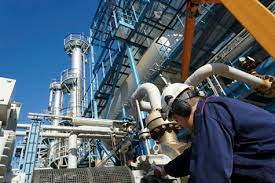
MHE Material Handling Equipment
MIS Management information system
MMS Maintenance management Software
MS Microsoft
NCO National Classification Of Occupations
NFPA National Fire Protection Association
NOS National Occupational Standards
NSQC National Skills Qualifications Committee
NSQF National Skills Qualifications Framework
OS Occupational Standards
OSHA Occupational Safety and Health Administration
PC Performance Criteria
PGA Participative Government Agencies
PO Purchase order
PPE Personal Protective Equipment
QP Qualifications Pack
SLA Service Level Agreements
SOPs Standard Operating Procedures
SOW Statement of Work
SSC Sector Skill Council
TAT Turn Around Time
TMS Transportation Management System
WMS Warehouse Management System
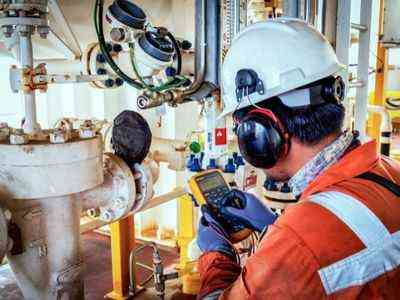
Conduct daily review and facilitate operations in tank farms
Description This unit is about conducting daily status reviews and facilitating daily operations in
tank farms
Scope This unit/task covers the following:
• Review status and facilitate daily operations
• Forecast and budget
• Approve workplans and allocate tasks
• Check compliance with legal and regulatory framework
Range: Computers, Management information system (MIS), Enterprise resource
planning (ERP), performance review software’s, budgeting and forecasting software’s
Performance Criteria(PC) w.r.t. the scope
Element Performance Criteria
Review status and
facilitate smooth
operations
To be competent, the user/individual on the job must be able to:
PC1. monitor cargo levels, tank farm alarms and infrastructure status, utilization
status, repair and cargo handling schedules, etc. on the Internet of Things
(IOT) system controls
PC2. review reports of loading, pumping and cleaning and high priority activities
performed
PC3. review work schedules, resource allocation and make amendments as
required
PC4. review inspection, fitness and maintenance reports
PC5. coordinate with port authorities, clients, Partnering Government Agencies
(PGAs), etc. for resolving cargo transfers, pending cases, tank repairs, etc.
PC6. monitor resource performance and take corrective action to improve
utilization
PC7. periodically inspect tank farms to check for safety compliance, cargo storage
and handling, cleanliness, use of adequate Personal Protective Equipment
(PPEs), resources, fitness of equipment and personnel, etc.
Forecast and budget To be competent, the user/ individual must be able to:
PC8. analyse cargo storage and handling trends across tank farms
PC9. prepare storage and revenue forecasts and budget for tank farm units
PC10. set-up consensus meetings with peers and seniors and get their approval on
the forecasts and budgets
PC11. make amendments in budgets periodically based on review of actual
performance
Approve work plans
and allocate tasks
To be competent, the user/individual on the job must be able to:
PC12. assess tasks, identify priorities and inform supervisors and executives
PC13. review and approve tank cleaning, maintenance schedules, work plans shared by supervisors
PC14. review and approve disaster management plans, drill schedules shared by
supervisors
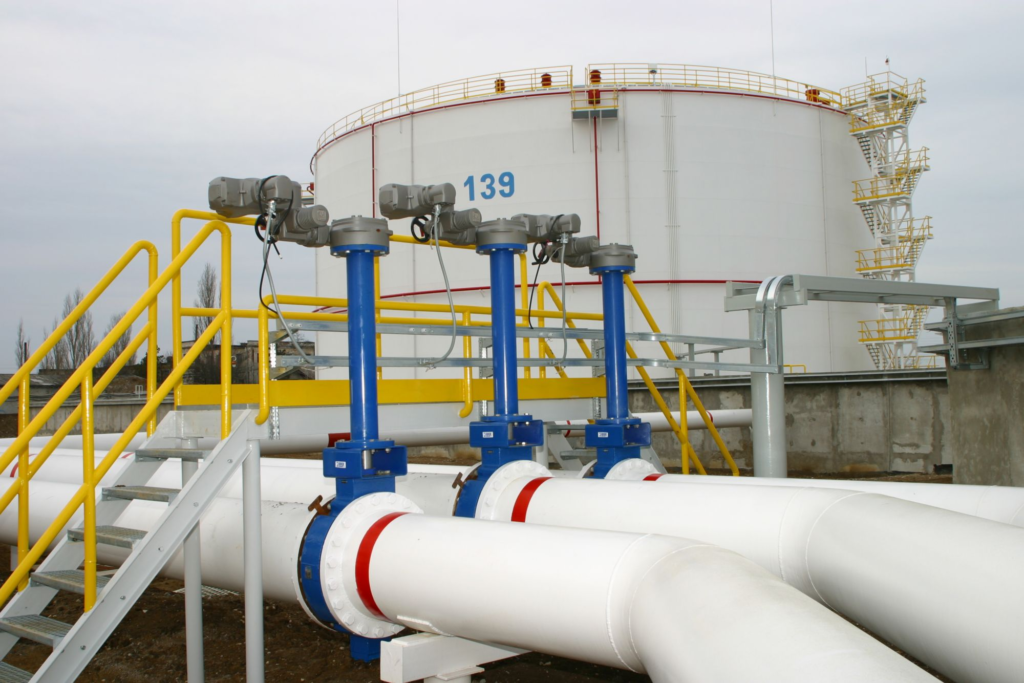
Ensure compliance to
legal and regulatory
requirements
To be competent, the user/ individual must be able to:
PC15. monitor compliance to local, country and international laws and processes on
a regular basis
PC16. monitor compliance with respect to cargo handling and storage norms
particularly for hazardous cargo
PC17. identify areas of non-compliance, and implement policies for compliances
PC18. conduct inspections to check compliance to Standard Operating Procedures
(SOPs) and regulations
Knowledge and Understanding (K)
A. Organizational
Context
(Knowledge of the
company /
organization and
its processes)
The individual on the job needs to know and understand:
KA1. organizational procedures
KA2. documentation and reporting as per organization’s mandate
KA3. security procedures to be followed
KA4. escalation matrix for reporting identified problems
KA5. risk and impact of not following defined procedures/work instructions
KA6. coding system followed to label cargo
KA7. Information Technology (IT) system and ERP system of the organization
B. Technical
Knowledge
The individual on the job needs to know and understand:
KB1. basics of operations in a port terminals and liquid terminals
KB2. different type of cargo, their classification – A, B, C and their handling
procedure and precautions
KB3. SOPs for different operations, petro-chemical standards – International
Electrotechnical Commission (IEC) 61511, IEC 61508, American Petroleum
Institute (API) 2350, National Fire Protection Association (NFPA), Oil industry
safety directorate guidelines and various committee recommendations
KB4. vessel layout and loading and unloading activities
KB5. procedures of tank cleaning, cargo movement
KB6. requirements regarding handling of cargo
KB7. handling of hazardous and non-hazardous cargo – – International Maritime
Dangerous Goods (IMDG) code
KB8. special characteristics and handling requirements of cargo, if any
KB9. ERP and automated controls for tank farms
KB10. trend analysis, budgeting, planning and forecasting
Skills (S)
A. Core skills/ Reading skills
The user/individual on the job needs to know how to read:
generic skills SA1. written instructions, reports, ERP data
SA2. system alarms, cargo levels, etc on online systems
SA3. checklists
Writing skills
The user/individual on the job needs to know how to write:
SA4. various reports, letters, presentations, documents
SA5. instructions
SA6. training pedagogy
Oral communication (listening and speaking skills)
The user/individual on the job needs to know how to:
SA7. communicate with supervisors, surveyors, clients, stakeholders custom and
port officers, PGAs
SA8. coordinate with local authorities, external support agencies
B. Professional skills Decision making
The user/individual on the job needs to know how to:
SB1. decide on resource requirement, budgets, maintenance schedules, forecasts
SB2. decide key clients for business development
SB3. decide on strategies for operations, disaster management, process
improvement
Plan and organize
The user/individual on the job needs to know how to:
SB4. plan and estimate the co-ordination required for resolving a querry.
SB5. maintain punctuality
SB6. respond to the client in a timely manner
SB7. prioritize and execute tasks based on client requirements
SB8. be a team player and achieve joint goals
Customer centricity
The user/individual on the job needs to know how to:
SB9. adhere to the customer timelines
SB10. address the urgency regarding approvals for cargo handling, repairs, etc.
Problem solving
The user/individual on the job needs to know how to:
SB11. coordinate to resolve stuck cases for cargo transfers, repair requirements, etc.
SB12. identify trends and plan accordingly to improve processes
SB13. identify bottlenecks and operational problems and suggest remedial action
Analytical thinking
The user/individual on the job needs to know how to:
SB14. analyse trends and prepare budgets and forecasts
SB15. identify trends and plan accordingly to improve processes
Critical thinking
The user/individual on the job needs to know and understand how to:
SB16. review and ensure safe handling and storage of liquid cargo
SB17. ensure adequate utilization of tank farm resources
SB18. adapt and implement global best practices
Assist in tank farm planning and commissioning
Description This unit is about planning the requirement of tank farms, designing the layout and
assisting in commisioning
Scope This unit/task covers the following:
• Identify tank farm requirements
• Coordinate with Engineering Procurement and Construction (EPC) contractors
• Assist in commissioning of the terminal
Range: Enterprise resource planning (ERP), Management information system (MIS),
regulatory norms, tank farm business planning model/software, tank farm
infrastructure/equipment specifications, control software specification, Microsoft
(MS) Office, computer, projector, stationery, worksheets etc.
Performance Criteria(PC) w.r.t. the scope
Element Performance Criteria
Identify tank farm
requirements
To be competent, the user/ individual must be able to:
PC1. analyse cargo movement trends and storage capacity in the region to identify
demand
PC2. assess possible locations (port terminals, inland units) for setting up tank
farms
PC3. evaluate the type and frequency of cargo moved, regulatory requirements,
ease of connectivity, availability of skilled resources, cargo offtake
possibilities, port and intake connectivity, overall profitability and returns
PC4. finalize the location and type of cargo terminal in discussion with superiors
and decision panel of the organization
PC5. finalize the capacity requirement and tank specifications for different types of
cargo
PC6. coordinate with technical team/consultant for preparing the detailed layout
and component design, piping layout, IT requirements, and safety
compliances
Coordinate with
Engineering
Procurement and
Construction (EPC)
contractors
To be competent, the user/ individual must be able to:
PC7. release advertisement and invite bids for tank farm construction and
commissioning
PC8. evaluate EPC contractors to finalise the right company for construction and
setting the tank terminal
PC9. evaluate Information Technology (IT) vendors, safety system vendors and
control system vendors for compliance to requirements and price
PC10. advise the construction contractor on requirements, type of cargo, estimated
precautions and IT integration required, etc.
PC11. advice the contractor regarding layout of terminal, different buildings,
distance between tanks, evacuation routes, and other safety and regulatory requirements
PC12. review progress on installation of tanks, pipelines, loading/unloading
terminals, etc. on a regular basis
PC13. supervise integration of IT systems and control systems with tank farm
hardware
PC14. escalate any delays in construction/ system integration and take
corrective/preventive actions
Assist in
commissioning of the
terminal
To be competent, the user/ individual must be able to:
PC15. check the terminal for adherence to the designed plans, layout, software
requirements etc.
PC16. check the tank farm for adherence to various regulations and mandatory
compliances required
PC17. perform pre-operative tests of tanks, pipelines, valves, regulators, control
systems, fire safety equipment, alarms etc.
PC18. ensure all the equipment and control systems clear the pre-operative tests as
per guidelines and regulations, else take corrective actions
PC19. provide final go-ahead for commissioning once the components are fully
tested
Knowledge and understanding (K)
A. Organizational
context
(Knowledge of the
company /
organization and
its processes)
The individual on the job needs to know and understand:
KA1. organizational procedures and Standard Operating Procedures (SOPs) for
tasks at hand, documentation policy and emergency responses
KA2. security and safety procedures to be followed
KA3. reporting structure of the organization and the supplier for escalation of
issues
KA4. risk and impact of not following defined procedures/work instructions
KA5. coding system followed for different type of liquids and their distress codes
B. Technical
knowledge
The individual on the job needs to know and understand:
KB1. different type of cargo, their classification – A, B, C and their handling
procedure and precautions
KB2. SOPs for different operations, petro-chemical standards – International
Electrotechnical Commission (IEC) 61511, IEC 61508, American Petroleum
Institute (API) 2350, National Fire Protection Association (NFPA), Oil industry
safety directorate guidelines and various committee recommendations
KB3. different regulatory authorities, Partnering Government Agencies (PGAs),
stakeholders involved
KB4. regulatory requirements with respect to cargo handling and terminal layout
KB5. using fire extinguisher and protocols for emergencies
KB6. documentation requirement for different type of cargo, equipment and their
handling
KB7. handling and emergency procedures for hazardous cargo
KB8. coordination with related stakeholders
KB9. documents and certificates to be verified in case of transports both trucks
and wagons
KB10. bid evaluation and vendor management
Skills (S)
A. Core skills/
generic skills
Reading skills
The user/individual on the job needs to know how to read:
SA1. written instructions
SA2. design documents, layouts, plans, prepsentations, reports
SA3. ERP and computer generated reports
SA4. terminal layout and storage plans
SA5. SOPs and safety regulation and compliance manuals
Writing skills
The user/individual on the job needs to know how to write:
SA6. work-orders, bid evaluation reports, instructions, etc.
SA7. various reports and letters
Oral communication (listening and speaking skills)
The user/individual on the job needs to know how to:
SA8. communicate with supply chain specialists, freight operators, EPC, senior
management and port authorities
SA9. communicate with regulatory authorities and PGAs
B. Professional skills Decision making
The user/individual on the job needs to know how to:
SB1. decide on capacity, cargo type and location for tank farmss
SB2. decide on suitable EPC for commissioning
SB3. decide if the project is ready for commisioning
Plan and organize
The user/individual on the job needs to know how to:
SB4. plan and estimate the co-ordination required for resolving a querry.
SB5. maintain punctuality and respond n a timely manner
SB6. prioritize and execute tasks based on client requirements
SB7. be a team player and achieve joint goals
Customer centricity
The user/individual on the job needs to know how to:
SB8. adhere to assigned timelines and compliance requirements
SB9. address the customer requirement when designing tank farms
Problem solving
The user/individual on the job needs to know how to:
SB10. co-ordinate and handle major issues with different departments for smooth
construction and compliances
SB11. provide suggestions for meeting compliance in different activities
Analytical thinking
The user/individual on the job needs to know how to:
SB12. analyse trends to identify tank farm requirements
SB13. review layout plans to ensure it meets compliance
Critical thinking
The user/individual on the job needs to know and understand how to:
SB14. conduct correct estimate of forecasts to identify the right locationand
capacity considering business prifitability
SB15. ensure complaince in designing and layout
Business development and stakeholder relations
Description This unit is about generating new business and maintaining relation with all
stakeholders
Scope This unit/task covers the following:
• Generate new business prospects
• Maintain customer relations
• Coordinate with government officials, vendors and contractors
Range: Instructional material, safety guidelines, safety signs, computer, projector etc.
Performance Criteria(PC) w.r.t. the scope
Element Performance Criteria
Generate new
business prospects
To be competent, the user/individual on the job must be able to:
PC1. obtain a list of existing clients and new prospects from the company’s sales
database.
PC2. prepare sales targets and relationship strategies
PC3. prioritize the clients for contacting, based on the previous relationship
building calls made to each of them
PC4. call clients and prospects to seek meeting
PC5. meet client to offer new services and take feedback for current services
PC6. identify client’s business need and offer customized and bundled solutions
PC7. negotiate on costs, close the deal and collect organizational and payment
details of the client
PC8. take client’s feedback before leaving
PC9. update information into Enterprise resource planning (ERP), inform the
relevant departments on sale closure
Maintain customer
relations
To be competent, the user/ individual must be able to:
PC10. regularly interact with the client over phone, emails or personal visits
PC11. address the query raised by the customers effectively and timely
PC12. take appropriate actions on escalations raised by customers
PC13. handle customer grievances
PC14. quickly respond to the clients for their e-mails, voice-messages, calls, etc.
PC15. provide regular information to clients regarding new offerings, discounts,
customised solutions, etc.
Co-ordinate with
government officials,
vendors and
contractors
To be competent, the user/ individual must be able to:
PC16. liaise with customs, other Govt. departments, Partnering Government
Agencies (PGAs), etc. and build professional relations with them
PC17. analyse and manage claim requests
PC18. co-ordinate with marketing agencies for publicity of services of the company
PC19. negotiate with carriers, warehouse and transport operators, custom brokers,
insurance company representatives, vendors, etc. for services, preferential
rates, service level agreements (SLA), payment period, etc.
PC20. co-ordinate with labour contractor and local vendors for sufficient workforce,
carrier vehicle availability as per work demand
Knowledge and understanding (K)
A. Organizational
context
(Knowledge of the
company /
organization and
its proses)
The individual on the job needs to know and understand:
KA1. vision, mission and values of the company
KA2. company’s reporting structure to support and expedite project acivities
KA3. company’s policy and work instructions on quality standards as well as
documentation policy
KA4. importance of the individual’s role in the workflow
KA5. company’s policy on business ethics and code of conduct
KA6. business and performance of the company
KA7. knowledge repository and various projects done by the company
KA8. occupational health and safety standards, handling of special and dangerous
goods, etc.
KA9. procedures for dealing with loss or damage to goods
KA10. value of items handled and implications of damage/loss of the same
KA11. risk and impact of not following defined work, safety and security procedures
KA12. company policy defined Turn Around Time (TATs) and output metrics for daily
operations
KA13. just in time (JIT) mode of inventory management
KA14. coding system followed to label items
KA15. the Information Technology(IT) system and Enterprise resource planning
(ERP) system of the organization
B. Technical
knowledge
The user/individual on the job needs to know and understand:
KB1. process flow of service operation, value chain and basic supply chain value
map within the sub sector
KB2. state/country taxes and routing
KB3. local and global geographical knowledge
KB4. use of ERP software including Warehouse Management System (WMS),
Maintenance management Software (MMS) and Transportation Management
System (TMS)
KB5. use of tools for documentation: Microsoft (MS) excel and MS Word, etc.
KB6. basics of statistical and quantitative analysis tools
KB7. use of spreadsheets to tabulate and analyze the data
KB8. structure and implications of fees and charges involved in transportation,
warehousing, etc.
KB9. transit rules and regulations
KB10. significance of team coordination to achieve revenue and productivity targets
of the organisation
KB11. customer relationship management
KB12. about contract management and Service Level Agreement (SLA)
KB13. factors for evaluation of performance of vendors
Skills (S)
A. Core skills/ generic
skills
Reading skills
The user/ individual on the job needs to know how to read:
SA1. company quality policy, work instructions and customer requirement
SA2. transit rules and trade policies
SA3. regulatory requirement associated with custom clearance
SA4. e-mails, invoices, letters, notes, memos, agreement reports, etc.
Writing skills
The user/ individual on the job needs to know how to:
SA5. write e-mails and letters to government officials, customers, vendors, etc.
SA6. note information about vendors on factors like quality of service,on-time
order completion, cooperation etc
Oral communication (listening and speaking skills)
The user/ individual on the job needs to know how to:
SA7. listen and understand the requirements of the client
SA8. communicate with clients, government officials and other external
stakeholders by using various communication channels
SA9. exchange information with other managers, supervisory and operational staff
at all levels
SA10. carefully listen to vendor concerns and issues
B. Professional skills Decision making
The user/ individual on the job needs to know how to:
SB1. decide corrective measures to improve customer ratings
SB2. decide actions to be taken on escalations raised by the customer
SB3. decide appropriate action for poor performance and lack of cooperation by
vendor/ Third-party logistics (3PL)
SB4. identify and prioritise on select clients and prospects for generating business
Plan and organize
The user/ individual on the job needs to know how to:
SB5. liaison with customers, government officials, vendors and staff to ensure that
smooth functioning of service centre/office
SB6. plan and organise review meetings with vendors, contractors
SB7. organise projects/ training plans for performance improvement
Customer centricity
The user/ individual on the job needs to know how to:
SB8. take prompt action on queries raised by the customer
SB9. address customer requirement and offer customised or bundled solutions
SB10. suggest ideas and solutions to increase customer loyalty and satisfaction
Problem solving
The user/ individual on the job needs to know how to:
SB11. resolve the queries raised by customers as well as goverment officals
SB12. address the queries raised by vendors, contractors and other external
stakeholders
Analytical thinking
The user/ individual on the job needs to know and how to:
SB13. identify the factors that helped improve customer satisfaction
SB14. identify commonly preferred bundles and customisations
SB15. analyse reasons for customer dis-satisfaction
SB16. identify areas that are crucial for performance improvement
Critical thinking
The user/ individual on the job needs to know how to:
SB17. improve work processes by adopting best practices
SB18. act upon constructively on any problems as identified
SB19. handle personality clashes effectively
Build customer relations and handle key accounts
Description This unit is about building customer relations and handling key accounts
Scope This unit/task covers the following:
• Enhance customer relations
• Handle key accounts
• Identify and convert new prospects
Range: Microsoft (MS)-word, MS-excel, Enterprise resource planning (ERP), computer,
projector, worksheets, stationery, business planning model/software etc.
Performance Criteria(PC) w.r.t. the scope
Element Performance Criteria
Enhance customer
relations
To be competent, the user/ individual must be able to:
PC1. identify the key staff in the client companies and develop good relationship
PC2. continuously interact with customer to get their feedback
PC3. provide customised solutions to customers and assist in resolving their issues
PC4. analyse feedback given by customers and develop or improve the system
accordingly
PC5. work on the system improvement w.r.t. operational process management,
claims management, customer relationship management, etc. in order to
improve the customer service experience with organisation
PC6. retain the customer by adding value to services and renew their service
contracts
PC7. improve customer satisfaction continuously to gain customer loyalty
Handle key accounts To be competent, the user/ individual must be able to:
PC8. organise and conduct regular meetings with key stakeholders in high value
accounts
PC9. offer bundled products and solutions to continuously increase business
PC10. take the corrective action on feedback given by customers
PC11. resolve escalated concerns of the key accounts
PC12. inform the key accounts about existing and upcoming offers, discounts, new
launches, seminars and work-shops
PC13. provide additional facilities to key accounts like priority to emergency cases,
faster deliveries, etc.
Identify and convert
new prospects
To be competent, the user/ individual must be able to:
PC14. identify prospective leads and establish relationship with them
PC15. meet with new institutional clients to develop business
PC16. understand their business requirements and provide customised solutions
PC17. provide initial subscription benefits to clients and create synergies through
customised and bundled offerings
PC18. acquire new clients and increase the overall client base
Knowledge and understanding (K)
A. Organizational
context
(Knowledge of the
company /
organization and
its processes)
The user/individual on the job needs to know and understand:
KA1. vision, mission and values of the company
KA2. company’s policy and work instructions on quality standards
KA3. company’s customer profile
KA4. company’s reporting structure
KA5. company’s documentation policy
KA6. procedures for dealing with loss or damage to shipment
KA7. services offered by company
KA8. importance of the individual’s role in the workflow
KA9. occupational health and safety standards
KA10. company’s policy on business ethics and code of conduct
B. Technical
knowledge
The user/individual on the job needs to know and understand:
KB1. transit rules and regulations
KB2. process flow of warehouse, transport and material handling service operation
KB3. state/country taxes and routing
KB4. local and global geographies
KB5. use of ERP software including Warehouse Management System (WMS),
Maintenance management Software (MMS) and TMS (Transportation
Management System)
KB6. use of tools for documentation: Microsoft (MS) excel and MS Word
KB7. basics of statistical and quantitative analysis tools
KB8. use of spread sheets to tabulate and analyse the data
KB9. structure and implications of fees and charges involved in transportation
KB10. the use of computer or handheld device to communicate effectively and
productively
KB11. importance of documenting customer feedback as per Standard Operating
Procedures (SOP)
KB12. how to demonstrate ethics and convey discipline to the customers
KB13. importance of gaining customer satisfaction
Skills (S)
A. Core skills/
generic skills
Reading skills
The user/ individual on the job needs to know how to read:
SA1. company quality policy, work instructions and customer requirement
SA2. transit rules and trade policies
SA3. regulatory requirement associated with custom clearance
SA4. e-mails, invoices, letters, notes, memos, agreement reports, etc.
SA5. contracts, Service Level Agreements (SLA) and Statement of Work SOW
Writing skills
The user/ individual on the job needs to know how to:
SA6. maintain the record of as per company’s policy
SA7. make the note of instructions to team members
SA8. develop operating procedures, improvements
SA9. write communications, letters and documents for internal communication
SA10. prepare daily reports, checklists
Oral communication (listening and speaking skills)
The user/ individual on the job needs to know how to:
SA11. listen and understand the requirements of the client
SA12. communicate with clients, government officials and other stakeholders
SA13. exchange information with other managers, supervisory and operational staff
B. Professional skills Decision making
The user/ individual on the job needs to know how to:
SB1. decide on corrective measures to improve customer ratings
SB2. decide on actions to be taken on escalations raised by the customer
SB3. take appropriate action for poor performance by vendor/ Third-party logistics
(3PL)
SB4. identify and prioritise on select clients and prospects for generating business
Plan and organize
The user/ individual on the job needs to know and how to:
SB5. liaison with customers, government officials, vendors and staff
SB6. plan and organise review meetings with vendors, contractors
SB7. organise projects/ training plans for performance improvement
Customer centricity
The user/ individual on the job needs to know and understand how to:
SB8. take prompt action on queries raised by the customer
SB9. understand customer requirement and offer customised or bundled solutions
SB10. suggest ideas and solutions to increase customer loyalty and satisfaction
Problem solving
The user/ individual on the job needs to know and understand how to:
SB11. resolve the queries raised by customers
SB12. suggest solutions to the customer’s issues
Analytical thinking
The user/ individual on the job needs to know and understand how to:
SB13. identify the factors which improved the customer satisfaction as well as
ratings of the organisation
SB14. identify bundles and customisations that cater to the requirement of majority
of customers
SB15. analyse key reasons for non-performance and customer dis-satisfaction
SB16. identify key areas that are crucial for performance improvement
Critical thinking
The user/ individual on the job needs to know and understand how to:
SB17. improve work processes by adopting best practices with respect to quality of
service to the customers
SB18. act upon constructively on any problems as pointed by customers, vendors or
government officials
SB19. handle personality clashes effectively
Review performance and develop performance improvement plan
Description This unit is about reviewing performance and developing performance improvement
plan
Scope This unit/task covers the following:
• Analyse activity wise operational performance
• Identify reasons for non-performance and areas for improvement
• Implement performance improvement action plans
• Provide leadership and direction
Range: Standard Operating Procedures (SOP), Management information system (MIS),
Enterprise resource planning (ERP), worksheets, stationery, computer, projector etc.
Performance Criteria(PC) w.r.t. the Scope
Element Performance Criteria
Analyse activity wise
operational
performance
To be competent, the user/ individual must be able to:
PC1. analyse activity related performance metrics
PC2. review output reports for escalated cases to identify reasons
PC3. review asset utilization rates and revenue per manpower
PC4. analyse trend of defaults, delays, etc. along with their reasoning
PC5. analyse the trends of various output metrics like average time per case,
average number delays per week, etc. to measure operational performance
Identify reasons for
non-performance and
areas of
improvement
To be competent, the user/ individual must be able to:
PC6. analyse reasons for non-performance with respect to each operation and
department
PC7. identify process improvement areas and departments
PC8. identify training needs and develop training plans
PC9. analyse resource utilization trends to arrive at cases of under-utilization and
poor equipment management
PC10. examine staff turnover issues
PC11. identify the department and staffs that are underperforming and take
necessary actions to improve performance
Implement
performance review
action plan
To be competent, the user/ individual must be able to:
PC12. prioritise performance improvement project implementation
PC13. develop strategic action plans to increase overall worker and operational
efficiency
PC14. communicate performance improvement benefits to senior management and
take their approval
PC15. establish key performance indicators, track regular performance output with
respect to set goals and take corrective actions
PC16. address all employee performance problems promptly and directly in
accordance with personnel policies
PC17. take necessary action in case of theft or fiddling with the shipment
Provide leadership
and direction
To be competent, the user/ individual must be able to:
PC18. develop, implement, and manage departmental policies, procedures,
standards and strategies as required
PC19. set objectives and provide support to team members
PC20. communicate and emphasise on policies and standards in line with the
regulations laid down by various governing Acts
PC21. guide and support them to cope with work load
PC22. conduct meetings with staff to assess group’s overall performance; discuss
ideas for improvement and inform staff of new developments
PC23. support team members in identifying, developing and implementing new
ideas
PC24. direct the hiring, training, and performance evaluations of staff
Knowledge and understanding (K)
A. Organizational
context
(Knowledge of
the company /
organization and
its processes)
The user/individual on the job needs to know and understand:
KA1. vision, mission and values of the company
KA2. company’s policy on business ethics and code of conduct
KA3. business and performance of the company
KA4. knowledge repository and various projects done by the company
KA5. reporting structure to support and expedite project acivities
KA6. escalation matrix for reporting issues/challenges
KA7. company’s policy and work instructions on quality standards
KA8. company’s personnel management and incentives rules
KA9. importance of the individual’s role in the workflow
KA10. company policy defined Turn Around Time (TATs) and output metrics for daily
operations
KA11. company’s approach towards skill up-gradation and technology
modernisation
KA12. company’s training plans and schedules
B. Technical
Knowledge
The user/individual on the job needs to know and understand:
KB1. process flow of service operation, value chain and basic supply chain map
within the sub sector
KB2. state/country taxes and routing
KB3. local and global geographical knowledge
KB4. use of enterprise resource planning software (ERP) including Warehouse
Management System (WMS), Maintenance management Software (MMS) and
Transportation Management System (TMS)
KB5. use of various tools for documentation: Microsoft (MS) excel and MS Word,
etc.
KB6. basics of statistical and quantitative analysis tools
KB7. use of spreadsheets to tabulate and analyze the data
KB8. structure and implications of fees and charges involved in transportation,
warehousing, etc.
KB9. transit rules and regulations
KB10. significance of team coordination to achieve revenue and productivity targets
of the organisation
KB11. customer relationship management and contract management, and Service
Level Agreements (SLA)
KB12. factors for evaluation of operational performance and utilization for resources
KB13. different metrics of performance evaluation
KB14. different solutions to improve performance and utilization
Skills (S)
A. Core skills/
generic skills
Reading skills
The user/ individual on the job needs to know how to read:
SA1. company policy and standard work related documents
SA2. emails, letters and instructions
SA3. daily reports
Writing skills
The user/ individual on the job needs to know how to:
SA4. prepare reports on delivery performance, demand forecast, franchisee
performance etc.
SA5. write Minutes of Meeting, mails and memos
Oral communication (listening and speaking skills)
The user/ individual on the job needs to know how to:
SA6. interact with team members to work efficiently
SA7. communicate effectively with colleagues and vendors to achieve smooth
workflow
SA8. communicate quality standards and performance metrics clearly to all the
employees
SA9. listen to queries patiently and answer them aptly
B. Professional skills Decision making
The user/ individual on the job needs to know how to:
SB1. decide on corrective measures to improve performance
SB2. identify and prioritise modules of improvement plans
SB3. prioritise areas for performance improvement
SB4. decide on actions to be taken on any issues identified hampering operational
efficiency
SB5. identify departments providing high performance and departments with low
performance
SB6. decide on training plans and improvement plans for departments and
individuals
Plan and organize
The user/ individual on the job needs to know how to:
SB7. plan and organise performance review sessions
SB8. make action plan for performance improvement
SB9. organise projects/ training plans for performance improvement
SB10. monitor the activities of the performance improvement plan
SB11. plan and organise monitoring activities to ensure no breach in terms of
commitments
SB12. timely complete analysis on reports and issues identified
Customer centricity
The user/ individual on the job needs to know how to:
SB13. analyse performance with focus on customer requirement and ability to
improve satisfaction levels with customers
SB14. sensitise individuals towards customer satisfaction and train them accordingly
Problem solving
The user/ individual on the job needs to know how to:
SB15. resolve interpersonal issues among employees
SB16. resolve performance related bottlenecks with respect to individuals and
resources
SB17. guide staff towards appropriate training to improve performance and remove
bottlenecks
SB18. assess resource utilization and performance and suggest solutions to remove
bottlenecks
Analytical thinking
The user/ individual on the job needs to know and understand how to:
SB19. analyse reports and take necessary action
SB20. analyse output and delivery performance to infer bottlenecks
SB21. assess the performance of resources to see capacity utilization
SB22. assess performance to see if there is a need for technology up-gradation or
training
Critical thinking
The user/ individual on the job needs to know and understand how to:
SB23. improve work processes by adopting global best practices
SB24. resolve recurring inter-personal or system related conflicts with colleagues
that hinder service
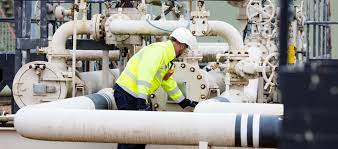
SB25. act upon constructively on any problems as pointed by seniors
SB26. review performance with respect to requirement and compare with global
Profit and loss account management and cost accounting
Description This unit is about about Profit and loss account management and cost accounting
Scope This unit/task covers the following:
• Profit and loss account management and review
• Analysis of activity based costs
Range: Computers, Management information system (MIS), Enterprise resource
planning (ERP), performance review softwares
Performance Criteria(PC) w.r.t. the Scope
Element Performance Criteria
Profit and Loss
account management
and review
To be competent, the user/ individual must be able to:
PC1. review department wise budgets and make amendments if required
PC2. collate and prepare annual budgets along with sales and profit targets
PC3. schedule both capital and operational expenses accordance to the budget
PC4. analyse and review the Profile & Loss performance for the unit
PC5. analyse profitability and business performance trends department wise
PC6. periodically analyse variances in the expenditure with respect to the budget
and accordingly take corrective actions
PC7. periodically analyse the physical output and performance with respect to the
budget and identify places for improvements
PC8. undertake adequate risk management so as to meet Key Performance targets
PC9. manage and control budgets of different departments on a periodic basis to
optimise financial performance
Analysis of activity
based costs
PC10. periodically review activity and department financial performance
PC11. identify the activities having high variance with respect to the budgeted costs
or the forecasted revenue
PC12. analyse the actual cost w.r.t physical output to draw inferences
PC13. identify reasons in discussion with department and take remedial and
corrective actions where-ever required
PC14. work towards rationalizing the cost of the activity wise operations to achieve
higher financial goals
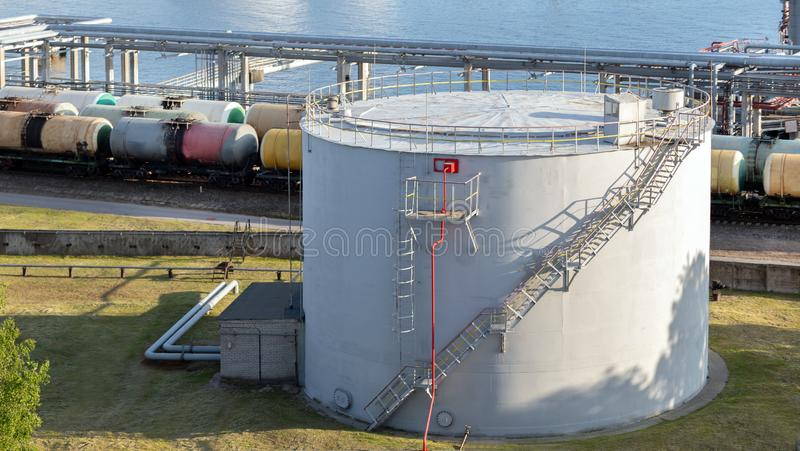
Knowledge and understanding (K)
A. Organizational
context
(Knowledge of
the company /
organization and
its processes)
The individual on the job needs to know and understand:
KA1. vision, mission and values of the company
KA2. company’s reporting structure to support and expedite project acivities
KA3. company’s policy and work instructions on quality standards as well as
documentation policy
KA4. importance of the individual’s role in the workflow
KA5. company’s policy on business ethics and code of conduct
KA6. business and performance of the company
KA7. knowledge repository and various projects done by the company
KA8. occupational health and safety standards, handling of special and dangerous
goods, etc.
KA9. procedures for dealing with loss or damage to goods
KA10. value of items handled and implications of damage/loss of the same
KA11. risk and impact of not following defined work, safety and security procedures
KA12. company policy defined Turn Around Time(TATs) and output metrics for daily
operations
KA13. coding system followed to label items
KA14. Information Technology(IT) system and ERP system of the organization
KA15. organizational goal for the year as well as branch/ territory targets
B. Technical
knowledge
The user/individual on the job needs to know and understand:
KB1. process flow of service operation and understanding of basic supply chain
value chain
KB2. state/country taxes and routing
KB3. local and global geographies
KB4. use of ERP software including Warehouse Management System (WMS),
Maintenance management Software (MMS) and Transportation Management
System (TMS)
KB5. use of tools for documentation: Microsoft (MS) excel and MS Word, etc.
KB6. basics of statistical and quantitative analysis tools
KB7. use of spreadsheets to tabulate and analyze the data
KB8. structure and implications of fees and charges involved in transportation,
warehousing, processing clearances, etc.
KB9. transit rules and regulations
KB10. working and capacities of different Material Handling Equipment (MHEs) and
other equipment used for handling the shipment
KB11. procurement related concepts like Purchase order (PO), Invoices, procedures
etc.
KB12. significance of team coordination to achieve revenue and productivity targets
of the organisation
KB13. various techniques for performance improvement and cost accounting
KB14. budgeting excercises
Skills (S)
A. Core skills/
generic skills
Reading skills
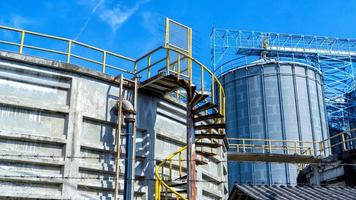
The user/individual on the job needs to know how to read:
SA1. company’s work instructions, customer requirement and quality policy
SA2. egal policies and regulations
SA3. internal communications memorandums
SA4. written instructions, standard operating procedures
SA5. Standard Operating Procedures (SOPs) and documents required for all
operational activities
SA6. inferences drawn from the system reports
SA7. financial statements
Writing skills
The user/individual on the job needs to know how to:
SA8. maintain the record of as per company’s policy
SA9. make the note of instructions to team members
SA10. develop operating procedures and update them
SA11. write communications, letters, etc.
SA12. prepare daily reports, checklists
SA13. prepare reports and presentations based on data analytics and ERP reports
Oral communication (listening and speaking skills)
The user/individual on the job needs to know how to:
SA14. communicate with client, external coordinators, internal staff effectively
SA15. motivate employees
SA16. share experiences and provide guidance to juniors and peers
B. Professional skills Decision making
The user/ individual on the job needs to know and understand how to:
SB1. assess business performance to identify need for interventions
SB2. identify areas for improvement and accordingly suggest remedial action
SB3. identify areas for budget modifications and budget cuts
SB4. decide on ways to improve performance
Plan and organize
The user/ individual on the job needs to know how to:
SB5. plan and organise performance review sessions
SB6. make action plan for performance improvement
SB7. organise projects/ training plans for performance improvement
SB8. monitor the activities of the performance improvement plan
Customer centricity
The user/ individual on the job needs to know how to:
SB9. sensitive employees towards customer requirements
SB10. focus on customer satisfaction as a key part of the performance review
Problem solving
The user/individual on the job needs to know how to:
SB11. identify reasons for variances and resolve them in discussion with team and
management
SB12. suggest new technologies, capital purchases, operational strategies to
enhance operational and financial performance
Analytical thinking
The user/individual on the job needs to know how to:
SB13. analyze reasons for variances across departments
SB14. compare with past trends to see if it is seasonal or cyclical in nature
SB15. identify areas that are crucial for improvement and accordingly revisit
budgets
Critical thinking
The user/individual on the job needs to know how to:
SB16. assess the financial performance and make strategic decisions regarding
budgets, focus areas
SB17. motivate and ensure output so as to achieve financial goals
Maintain and monitor integrity and ethics in operation
Description This unit is about maintaining integrity, ensuring data security, and professional and
ethical practices
Scope This unit/task covers the following:
• Maintain integrity and ensure data security
• Professional and ethical practices
• Ensure regulatory compliance
Range: Standard Operating Procedures (SOP), computer, projector, worksheets,
stationery etc.
Performance Criteria(PC) w.r.t. the Scope
Element Performance Criteria
Maintain integrity
ensuring data
security
To be competent, the user/ individual must be able to:
PC1. refrain from indulging in corrupt practices
PC2. avoid using company’s funds, property or resources for undertaking personal
activities
PC3. protect customer’s information and ensure it is not missed
PC4. protect data and information related to business or commercial decisions
Professional and
ethical practices
To be competent, the user/ individual must be able to:
PC5. avoid acceptance of cash or kind from vendors for support or contract
negotiations
PC6. demonstrate and practice ethics in day-to-day processes and dealings with
customers and colleagues
PC7. avoid nepotism
PC8. consult supervisor or senior management when in situations that may require
differentiating between ethical and unethical
PC9. report promptly all violations of code of ethics
PC10. dress up and conduct in a professional manner
PC11. communicate with clients and stakeholders in a soft and polite manner
PC12. follow etiquettes in accordance to the place
Ensure regulatory
compliance
To be competent, the user/ individual must be able to:
PC13. check for regulatory documentation and compliances for the shop floor as per
information from the supervisor
PC14. perform activities considering the regulatory requirements
PC15. use Personal Protective Equipment (PPEs) in accordance to regulatory
requirements
PC16. identify the different types of dangerous goods and handling methodologies
PC17. follow the SOP for handling of different types of dangerous goods
PC18. consult supervisor or senior management when in situations that may require
differentiating between ethical and unethical
PC19. promptly report all regulatory violations
Knowledge and understanding (K)
A. Organizational
context
(Knowledge of the
company /
organization and
its processes)
The user/individual on the job needs to know and understand:
KA1. company’s policies on use of language
KA2. company’s Human Resources policies
KA3. company’s code of ethics
KA4. company’s whistle blower policy
KA5. company’s rules related to sexual harassment
KA6. company’s reporting structure
KA7. company’s documentation policy
B. Technical
knowledge
The user/individual on the job needs to know and understand:
KB1. principles of code of ethics and business ethics
KB2. various regulatory requirements
KB3. documentary compliance for various regulations
KB4. different dangerous shipment
KB5. regulations w.r.t dangerous shipment
Skills (S)
A. Core skills/
generic skills
Reading Skills
The individual on the job needs to know how to read:
SA1. company policy documents and work related documents
SA2. emails and written instructions
Writing Skills
The individual on the job needs to know how to fill:
SA3. documentation pertaining to ethics and regulatory requirement
Oral Communication (Listening and Speaking skills)
The individual on the job needs to know how to communicate with:
SA4. team members to work efficiently
SA5. peers and subordinates about information security and building trust
B. Professional skills
Decision making
The individual on the job needs to know how to:
SB1. identify a shipment as dangerous goods
SB2. assess if the situation needs to be reported regarding regulations
Plan and Organize
The individual on the job needs to know how to:
SB3. plan and organise actions as per company’s guidelines
Customer centricity
The individual on the job needs to know how to:
SB4. prevent company and customer information leakage
Problem solving
The individual on the job needs to know how to:
SB5. advisee colleagues regarding sensitive issues pertaining to conduct and
regulations
Analytical Thinking
The individual on the job needs to know how to:
SB6. provide professional services diligently and with integrity
Critical Thinking
The individual on the job needs to know how to:
SB7. avoid defaming company’s name by indulging into pilferage or fiddling with
quality or quantity of shipment
SB8. be fair and reasonable in profession and disclose conflict of interests
Follow health, safety and security procedures in liquid logistics
Description This unit is about ensuring compliance with health, safety and security procedures at
the workplace
Scope This unit/task covers the following:
• Follow health, safety and security procedures
• Ensure compliance to health, safety and security
• Prepare for disaster and pollution control response
Range: Personal Protective Equipment (PPE), Material Handling Equipment (MHE),
instructional material, alarms, safety guidelines, safety signs, computer, projector etc.
Performance Criteria(PC) w.r.t. the Scope
Element Performance Criteria
Follow health, safety
and security
procedures
To be competent, the user/ individual must be able to:
PC1. make note of all safety checks and comply with safety regulations
PC2. wear PPE such as goggles, ear plugs, helmet, mask, shoes, etc. as required
PC3. follow standard driving and equipment/ machine operating practice
PC4. follow protocol to initiate action in case of signs of any emergency situation
like accident or breach of safety
PC5. undertake periodical preventive health check ups
PC6. follow necessary standard operating procedures (SOP) and precautions while
handling dangerous and hazardous shipment
PC7. follow security procedures like green gate in port, customs area, factory
security, etc.
Ensure compliance to
health, safety and
security
To be competent, the user/ individual must be able to:
PC8. identify unsafe conditions and practices and report it to concerned authority
PC9. implement 5S at workplace
PC10. inspect the activity area and equipment for safe working condition
PC11. check that pathways/ emergency escape routes are clear and free from
grease/ oil
PC12. participate in fire drills
PC13. follow standard material handling procedures
PC14. hold ladders, platforms and hand rails in a safe position
PC15. check that the safety and security related tags, labels and signage are placed
on cargo
PC16. report in case of any violation
Prepare for disaster
and pollution control
response
To be competent, the user/ individual must be able to:
PC17. raise alarms and inform supervisors in case of any emergency – fire, leakage,
or pollution
PC18. coordinate with local authorities and nearby village representatives for
evacuation
PC19. follow SOP to contain the disaster or pollution – use fire extinguisher, start
emergency controls, close emergency valves, etc.
PC20. assist fellow workers in quick response and evaluation as per SOP
Knowledge and understanding (K)
A. Organizational
context
(Knowledge of the
company /
organization and
its processes)
The individual on the job needs to know and understand:
KA1. health, safety and security policies and procedures
KA2. special instructions for hazardous cargo handling
KA3. defined standard operating procedures
KA4. risk and impact of not following defined procedures/work instructions with
reference to health, safety and security operations
KA5. escalation matrix for reporting identified problem
B. Technical
knowledge
The individual on the job needs to know and understand:
KB1. basics of Occupational Safety and Health Administration (OSHA)
KB2. 5S implementation and practice
KB3. different type of cargo, their classification – A, B, C and their handling
procedure and precautions
KB4. SOPs for different operations, petro-chemical standards – International
Electrotechnical Commission (IEC) 61511, IEC 61508, American Petroleum
Institute (API) 2350, National Fire Protection Association (NFPA), Oil industry
safety directorate guidelines and various committee recommendations
KB5. using fire extinguisher and protocols for emergencies
KB6. operations of control systems pumps, valves, alarm systems, etc.
KB7. necessary security procedures for airport, customs area, etc.
KB8. tools and equipment for material handling
KB9. standard material handling procedures while handling cargo
KB10. safety and security signage and their functions
KB11. different security tags, labels and signage
KB12. handling procedure for hazardous / fragile cargo
KB13. security procedures for dangerous / hazardous shipment
KB14. different PPE, their usage and purpose
KB15. safe driving techniques
Skills (S)
A. Core skills/
generic skills
Reading skills
The user/individual on the job needs to know how to read:
SA1. SOPs and safety precautions for different ground operations and handling
cargo
SA2. alarms, various gauges and meters regarding temperature, pressure and level
SA3. different documents related to security and movement of cargo
Writing skills
The user/individual on the job needs to know how to:
SA4. fill forms related to health, safety and security procedures
SA5. prepare reports regarding pollution and disaster control, accidents, etc.
Oral communication (listening and speaking skills)
The user/individual on the job needs to know how to:
SA6. communicate clearly with colleagues regarding safety procedures
SA7. share experience and guide peers
SA8. coordinate with local authorities and disaster management teams
B. Professional skills Decision making
The user/individual on the job needs to know how to:
SB1. decide how to avoid any damage / accident to personal health / cargo
handled, whenever required
SB2. act objectively, rather than impulsively or emotionally when faced with
difficult/stressful or emotional situations
Plan and organize
The user/individual on the job needs to know how to:
SB3. plan clearance of area with safety of nearby population and workforce as top
priority
SB4. prioritize and execute tasks within the schedule time limits
SB5. plan and drive based on traffic and road condition using radio links/navigation
aids wherever available
Customer centricity
The user/individual on the job needs to know how to:
SB6. ensure safe and secure movement of liquid, cargo at all times
Problem solving
The user/individual on the job needs to know how to:
SB7. identify any threats on personal health, safety, security, etc. and take
appropriate actions
SB8. identify risks at the workplace and address them
Analytical thinking
The user/individual on the job needs to know how to:
SB9. analyse past mistakes and address them to avoid mishap in the future
Critical thinking
The user/individual on the job needs to know how to:
SB10. check that right safety measures and procedures are in place
SB11. quickly escalate and begin disaster management response
Manage port terminals
Description This unit is about about managing operations at port terminals
Scope This unit/task covers the following:
• Manage planning and operations for terminals
• Inspect yard
• Coordinate with customs, Participating Government Agencies (PGAs) and clients
Range: Enterprise resource planning (ERP), Management information system (MIS),
port operations manual, regulatory requirements manual, hazardous goods handling
manual, computer, projector, worksheets, stationery etc.
Performance Criteria(PC) w.r.t. the Scope
Element Performance Criteria
Manage planning and
operations for
terminal
To be competent, the user/ individual must be able to:
PC1. analyse cargo trends to develop forecasts and budgets
PC2. discuss with senior management to get budgets approved for both capital and
operational expenses
PC3. review and approve work plans, resource allocation plans, yard storage
utilization plans
PC4. monitor periodic performance and make amendments to better utilize
resources
PC5. review reports and documentation for adherence to compliance and
regulations
PC6. review and approve vessel berthing plans
Inspect yard To be competent, the user/ individual must be able to:
PC7. inspect yard for cleanliness, adherence to mandatory compliance and
regulations, resource upkeep, resource and storage utilization, etc.
PC8. check that cargo bays are clearly marked and segregated, containers and
cargo are stored as per prescribed norms
PC9. check that equipment and cranes are maintained as per plan
PC10. check that all necessary precautions for storage of hazardous cargo is in place
including emergency services
PC11. prepare inspection report highlighting any anomaly or changes, as required
Coordinate with
customs,
Participating
Government
Agencies (PGAs) and
clients
To be competent, the user/ individual must be able to:
PC12. coordinate with ports and custom officials for resolving issues, facilitating
cargo movement, providing information
PC13. coordinate with different PGAs for streamlining cargo documentation,
addressing specific query and requirements
PC14. coordinate with clients, shippers and freight owners for generating business,
catering to specific requirements and relationship building
Knowledge and understanding (K)
A. Organizational
context (Knowledge
of the company /
organization and its
processes)
The individual on the job needs to know and understand:
KA1. organizational procedures and Standard Operating Procedures (SOPs) for
tasks at hand, documentation policy and emergency responses
KA2. security and safety procedures to be followed
KA3. reporting structure of the organization and the supplier for escalation of
issues
KA4. risk and impact of not following defined procedures/work instructions
KA5. coding system followed for different type of cargo and their distress codes
B. Technical
knowledge
The individual on the job needs to know and understand:
KB1. basics of operations in a port terminal, Inland Container Depot (ICD) and
Container Freight Station (CFS)
KB2. Use and capacities of various cargo-handling equipment, cranes, Material
Handling Equipment (MHEs), etc.
KB3. types of vessels, their layout, cargo capacity, vessel berthing, etc. and loading
and unloading activities
KB4. handling of hazardous and non-hazardous cargo
KB5. marking of material and people movement areas
KB6. stuffing and de-stuffing norms with respect to different cargo
KB7. special characteristics and handling requirements of shipments, if any
KB8. emergency controls, regulations applicable at ports, etc.
Skills (S)
C. Core skills/
generic skills
Reading skills
The user/individual on the job needs to know how to read:
SA1. written instructions, reports, ERP data
SA2. System alarms, cargo levels, etc on online systems
SA3. Checklists
Writing skills
The user/individual on the job needs to know how to write:
SA4. various reports, letters, presentations, documents
SA5. instructions
SA6. training pedagogy
Oral communication (listening and speaking skills)
The user/individual on the job needs to know how to:
SA7. communicate with supervisors, surveyors, clients, stakeholders custom and
port officers, PGAs
SA8. coordinate with local authorities, external support agencies
D. Professional skills Decision making
The user/individual on the job needs to know how to:
SB1. Decide on resource requirement, budgets, maintenance schedules, forecasts
SB2. Decide key clients for business development
SB3. Decide on strategies for operations, cargo handling, disaster management,
process improvement,etc.
Plan and organize
The user/individual on the job needs to know how to:
SB4. plan and estimate the co-ordination required for resolving a querry.
SB5. maintain punctuality
SB6. respond to the client in a timely manner
SB7. prioritize and execute tasks based on client requirements
SB8. be a team player and achieve joint goals
Customer centricity
The user/individual on the job needs to know how to:
SB9. adhere to the customer timelines
SB10. address the urgency regarding approvals for cargo handling, repairs, etc.
Problem solving
The user/individual on the job needs to know how to:
SB11. coordinate to resolve stuck cases for cargo transfers, repair requirements, etc.
SB12. identify trends and plan accordingly to improve processes
SB13. identify bottlenecks and operational problems and suggest remedial action
Analytical thinking
The user/individual on the job needs to know how to:
SB14. analyse trends and prepare budgets and forecasts
SB15. identify trends and plan accordingly to improve processes
Critical thinking
The user/individual on the job needs to know and understand how to:
SB16. review and ensure safe handling and storage of hazrdous cargo
SB17. ensure adequate utilization of yard space and available resources
SB18. adapt and implement global best practices



